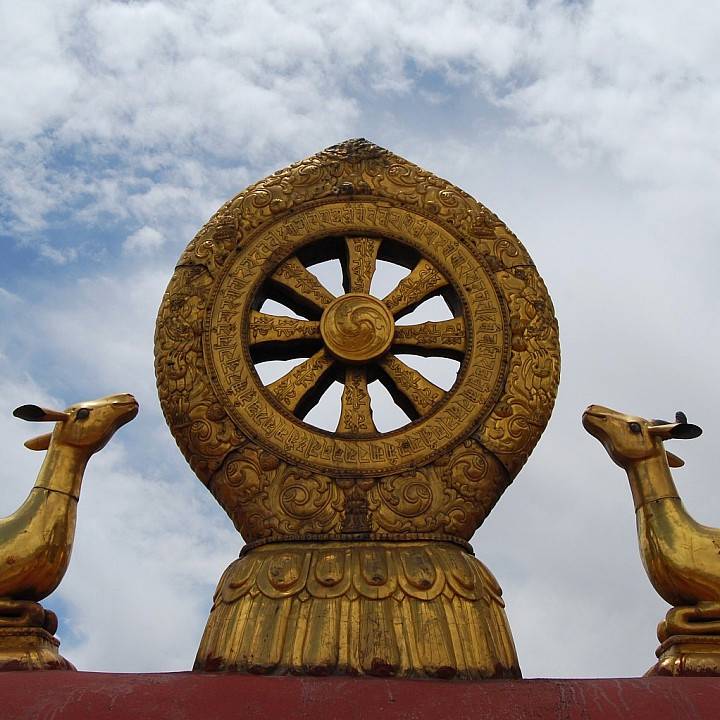|
Indriya
''Indriya'' (literally "belonging to or agreeable to Indra") is the Sanskrit and Pali term for physical strength or ability in general, and for and specifically refers to the ''five spiritual faculties'', the five or six sensory faculties, and the twenty-two phenomenological faculties. Etymology ''Indriya'', literally "belonging to or agreeable to Indra," chief deity in the Rig Veda and lord of the Trāyastriṃśa heaven (also known as Śakra or Sakka in Buddhism), hence connoting supremacy, dominance and control, attested in the general meaning of "power, strength" from the ''Rig Veda''. In Buddhist Sanskrit and Pali the term generally refers to physical strength or ability in general, and more specifically to the five spiritual faculties, the five or six sensory faculties, or the twenty-two phenomenological faculties. Five spiritual faculties In the Pali Canon's Sutta Pitaka, the "five spiritual faculties" (Pali: '), which contribute to an awake state of mind, are: * faith ... [...More Info...] [...Related Items...] OR: [Wikipedia] [Google] [Baidu] [Amazon] |
Noble Eightfold Path
The Noble Eightfold Path () or Eight Right Paths () is an early summary of the path of Buddhist practices leading to liberation from samsara, the painful cycle of rebirth, in the form of nirvana. The Eightfold Path consists of eight practices: right view, right resolve, right speech, right conduct, right livelihood, right effort, right mindfulness, and right ('meditative absorption or union'; alternatively, equanimous meditative awareness). In early Buddhism, these practices started with understanding that the body-mind works in a corrupted way (right view), followed by entering the Buddhist path of self-observance, self-restraint, and cultivating kindness and compassion; and culminating in or , which reinforces these practices for the development of the body-mind. In later Buddhism, insight () became the central soteriological instrument, leading to a different concept and structure of the path, in which the "goal" of the Buddhist path came to be specified as ending ... [...More Info...] [...Related Items...] OR: [Wikipedia] [Google] [Baidu] [Amazon] |
Jhana
In the oldest texts of Buddhism, ''dhyāna'' () or ''jhāna'' () is a component of the training of the mind (''bhavana''), commonly translated as meditation, to withdraw the mind from the automatic responses to sense-impressions and "burn up" the defilements, leading to a "state of perfect equanimity and awareness ('' upekkhā- sati- parisuddhi'')." ''Dhyāna'' may have been the core practice of pre-sectarian Buddhism, in combination with several related practices which together lead to perfected mindfulness and detachment. In the later commentarial tradition, which has survived in present-day Theravāda, ''dhyāna'' is equated with "concentration", a state of one-pointed absorption in which there is a diminished awareness of the surroundings. In the contemporary Theravāda-based Vipassana movement, this absorbed state of mind is regarded as unnecessary and even non-beneficial for the first stage of awakening, which has to be reached by mindfulness of the body and ''vipassan� ... [...More Info...] [...Related Items...] OR: [Wikipedia] [Google] [Baidu] [Amazon] |
Bojjhanga
In Buddhism, the Seven Factors of Awakening (Pali: ''satta bojjhagā'' or ''satta sambojjhagā''; Skt.: ''sapta bodhyanga'') are: * Mindfulness ('' sati'', Sanskrit ''smṛti''). To maintain awareness of reality, in particular the teachings (''Dhamma''). * Investigation of the nature of reality (''dhamma vicaya'', Skt. ''dharmapravicaya''). * Energy ('' viriya'', Skt. ''vīrya'') also determination, effort * Joy or rapture (''pīti'', Skt. ''prīti'') * Relaxation or tranquility (''passaddhi'', Skt. prashrabdhi) of both body and mind * Concentration (''samādhi'') a calm, one-pointed state of mind, or "bringing the buried latencies or ''samskaras'' into full view" * Equanimity ('' upekkhā'', Skt. ''upekshā''). To accept reality as-it-is (''yathā-bhuta'') without craving or aversion. This evaluation of seven awakening factors is one of the "Seven Sets" of "Awakening-related states" ('' bodhipakkhiyadhamma''). The Pali word ''bojjhanga'' is a compound of ''bodhi'' ("awakening ... [...More Info...] [...Related Items...] OR: [Wikipedia] [Google] [Baidu] [Amazon] |
Five Powers
The Five Strengths (Sanskrit, Pali: ') in Buddhism are faith, energy, mindfulness, concentration, and wisdom. They are one of the seven sets of Bodhipakkhiyadhamma ("qualities conducive to enlightenment"). They are paralleled in the five spiritual faculties, which are also part of the Bodhipakkhiyadhamma. Meaning ''Pañca'' (Sanskrit, Pali) means "five." ''Bala'' (Sanskrit, Pali) means "power," "strength," "force."See Rhys Davids & Stede (1921-25), p. 482, entry for "Bala," retrieved 2008-03-11 from "U. of Chicago" a and, Monier-Williams (1964), p. 722, entry "Bala," retrieved 2008-03-11 from "U. of Cologne" at http://www.sanskrit-lexicon.uni-koeln.de/cgi-bin/serveimg.pl?file=/scans/MWScan/MWScanjpg/mw0722-barAsI.jpg. The five strengths are: # Faith/Conviction ( Faith in Buddhism, saddhā bala) # Energy/Effort/Persistence ( viriya bala) # Mindfulness ( sati bala) # Concentration (samādhi bala) # Wisdom/Discernment ( paññā bala) In the Abbidhamma-tradition, the five str ... [...More Info...] [...Related Items...] OR: [Wikipedia] [Google] [Baidu] [Amazon] |
The Buddha
Siddhartha Gautama, most commonly referred to as the Buddha (),* * * was a śramaṇa, wandering ascetic and religious teacher who lived in South Asia during the 6th or 5th century BCE and founded Buddhism. According to Buddhist legends, he was born in Lumbini, in what is now Nepal, to royal parents of the Shakya clan, but Great Renunciation, renounced his Householder (Buddhism), home life to live as a wandering ascetic. After leading a life of mendicancy, asceticism, and meditation, he attained Nirvana (Buddhism), nirvana at Bodh Gaya, Bodh Gayā in what is now India. The Buddha then wandered through the lower Indo-Gangetic Plain, teaching and building a Sangha, monastic order. Buddhist tradition holds he died in Kushinagar and reached ''parinirvana'' ("final release from conditioned existence"). According to Buddhist tradition, the Buddha taught a Middle Way between sensual indulgence and severe asceticism, leading to Vimutti, freedom from Avidyā (Buddhism), ignora ... [...More Info...] [...Related Items...] OR: [Wikipedia] [Google] [Baidu] [Amazon] |
Indra
Indra (; ) is the Hindu god of weather, considered the king of the Deva (Hinduism), Devas and Svarga in Hinduism. He is associated with the sky, lightning, weather, thunder, storms, rains, river flows, and war. [3 volumes] Indra is the most frequently mentioned deity in the ''Rigveda''. He is celebrated for his powers based on his status as a god of order, and as the one who killed the great evil, an Asura (Hinduism), asura named Vritra, who obstructed human prosperity and happiness. Indra destroys Vritra and his "deceiving forces", and thereby brings rain and sunshine as the saviour of mankind. Indra's significance diminishes in the post-Vedic Indian literature, but he still plays an important role in various mythological events. He is depicted as a powerful hero. According to the ''Vishnu Purana'', Indra is the title borne by the king of the gods, which changes every Manvantara – a cyclic period of time in Hindu cosmology. Each Manvantara has its own Indra and the In ... [...More Info...] [...Related Items...] OR: [Wikipedia] [Google] [Baidu] [Amazon] |
Pali Canon
The Pāḷi Canon is the standard collection of scriptures in the Theravada Buddhism, Buddhist tradition, as preserved in the Pāli language. It is the most complete extant Early Buddhist texts, early Buddhist canon. It derives mainly from the Tamrashatiya school. According to Buddhist tradition, during the First Buddhist Council, three months after the parinibbana of Gautama Buddha in Rajgir, Ananda recited the Sutta Piṭaka, Sutta Pitaka, and Upali recited the Vinaya Piṭaka, Vinaya Pitaka. The Arhats present accepted the recitations, and henceforth, the teachings were preserved orally by the Sangha. The Tipitaka that was transmitted to Sri Lanka during the reign of King Asoka was initially preserved orally and later written down on palm leaves during the Fourth Buddhist Council in 29 BC, approximately 454 years after the death of Gautama Buddha. The claim that the texts were "spoken by the Buddha" is meant in this non-literal sense. The existence of the Bhāṇaka tradi ... [...More Info...] [...Related Items...] OR: [Wikipedia] [Google] [Baidu] [Amazon] |
Satipatthana
''Satipatthana'' (; ) is a central practice in the Buddha's teachings, meaning "the establishment of mindfulness" or "presence of mindfulness", or alternatively "foundations of mindfulness", aiding the development of a wholesome state of mind. In Theravada Buddhism, applying mindful attention to four domains, the body, feelings, the mind, and key principles or categories of the Buddha's teaching ( ''dhammās''), is thought to aid the elimination of the five hindrances and the development of the seven aspects of wakefulness. The ''Satipatthana Sutta'' is probably the most influential meditation text in modern Theravada Buddhism,Sujato (2012), pp. 1–2. on which the teachings of the Vipassana movement are based. While these teachings are found in all Buddhist traditions, modern Theravada Buddhism and the Vipassana Movement are known especially for promoting the practice of satipaṭṭhāna as developing mindfulness to gain insight into impermanence, thereby reaching a first ... [...More Info...] [...Related Items...] OR: [Wikipedia] [Google] [Baidu] [Amazon] |
Pali
Pāli (, IAST: pāl̤i) is a Classical languages of India, classical Middle Indo-Aryan languages, Middle Indo-Aryan language of the Indian subcontinent. It is widely studied because it is the language of the Buddhist ''Pali Canon, Pāli Canon'' or ''Tripiṭaka, Tipiṭaka'' as well as the sacred language of ''Theravada, Theravāda'' Buddhism. Pali was designated as a Classical languages of India, classical language by the Government of India on 3 October 2024. Origin and development Etymology The word 'Pali' is used as a name for the language of the Theravada canon. The word seems to have its origins in commentarial traditions, wherein the (in the sense of the line of original text quoted) was distinguished from the commentary or vernacular translation that followed it in the manuscript. K. R. Norman suggests that its emergence was based on a misunderstanding of the compound , with being interpreted as the name of a particular language. The name Pali does not appear in t ... [...More Info...] [...Related Items...] OR: [Wikipedia] [Google] [Baidu] [Amazon] |
Rig Veda
The ''Rigveda'' or ''Rig Veda'' (, , from wikt:ऋच्, ऋच्, "praise" and wikt:वेद, वेद, "knowledge") is an ancient Indian Miscellany, collection of Vedic Sanskrit hymns (''sūktas''). It is one of the four sacred canonical Hindu texts (''śruti'') known as the Vedas. Only one Shakha of the many survive today, namely the Shakala Shakha, Śakalya Shakha. Much of the contents contained in the remaining Shakhas are now lost or are not available in the public forum. The ''Rigveda'' is the oldest known Vedic Sanskrit text. Its early layers are among the oldest extant texts in any Indo-European language. Most scholars believe that the sounds and texts of the ''Rigveda'' have been orally transmitted with precision since the 2nd millennium BCE, through Indian mathematics#Styles of memorisation, methods of memorisation of exceptional complexity, rigour and fidelity, though the dates are not confirmed and remain contentious till concrete evidence surfaces. Philolog ... [...More Info...] [...Related Items...] OR: [Wikipedia] [Google] [Baidu] [Amazon] |
Four Right Exertions
The Four Right Exertions (also known as, Four Proper Exertions, Four Right Efforts, Four Great Efforts, Four Right Endeavors or Four Right Strivings) (Pali: '; Skt.: ' or ') are an integral part of the Buddhist path to Enlightenment (understanding). Built on the insightful recognition of the arising and non-arising of various mental qualities over time and of our ability to mindfully intervene in these ephemeral qualities, the Four Right Exertions encourage the relinquishment of harmful mental qualities and the nurturing of beneficial mental qualities. The Four Right Exertions are associated with the Noble Eightfold Path's factor of "right effort" (''sammā-vāyāma'') and the Five Spiritual Faculties' faculty of "energy" ('' viriya''); and, are one of the seven sets of Bodhipakkhiyadhamma, factors related to ''bodhi''. In the Pali literature The Four Right Exertions are found in the Vinaya Pitaka, Sutta Pitaka, Abhidhamma Pitaka and Pali commentaries. Additionally, a s ... [...More Info...] [...Related Items...] OR: [Wikipedia] [Google] [Baidu] [Amazon] |





